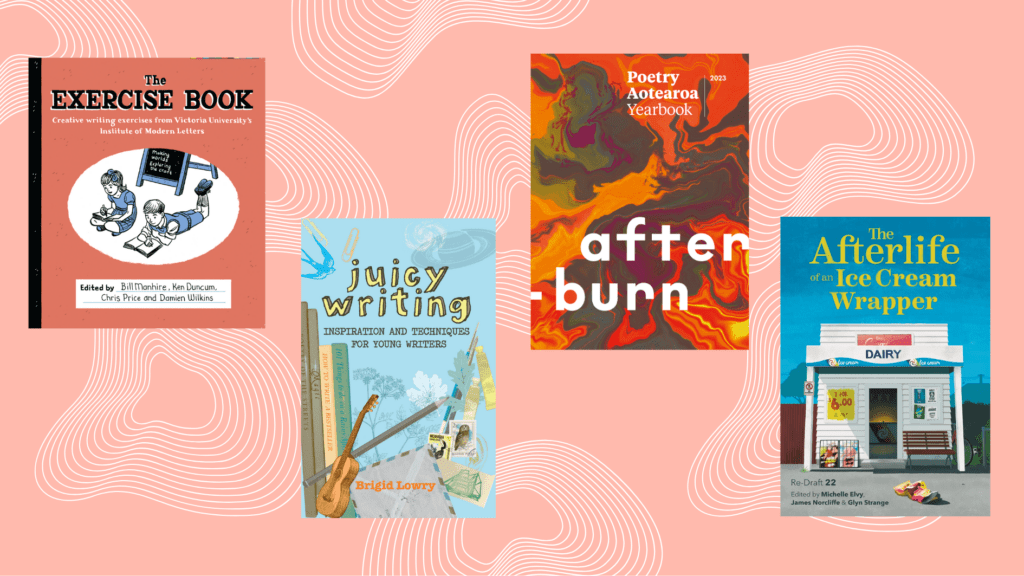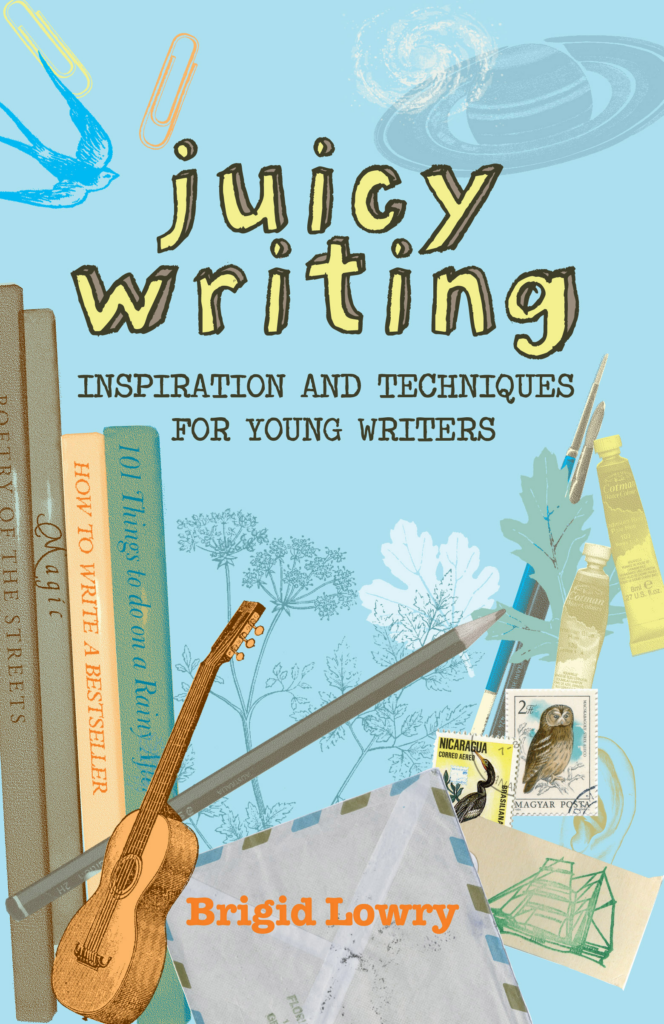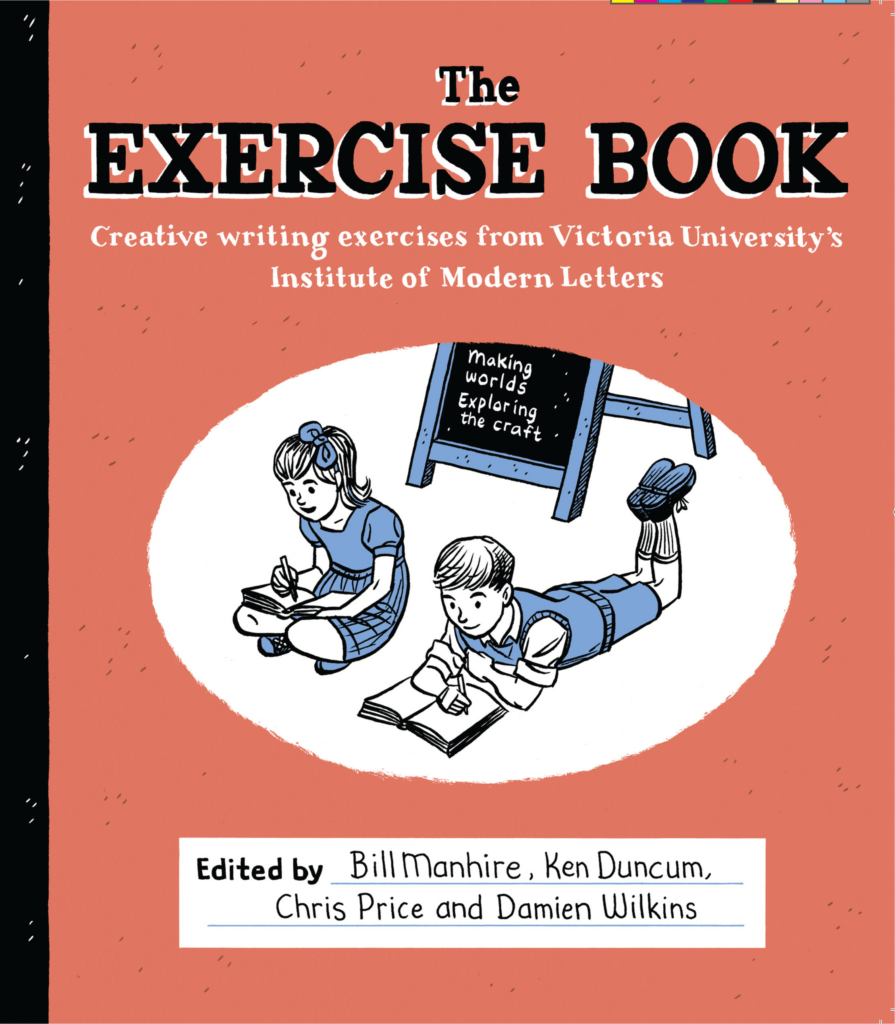As a high school English teacher, Annabelle Reeves is passionate about helping young people unleash their creativity. Here, she imparts her wisdom with the writing guides she’s found most useful for budding creatives, plus her competition recommendations for putting that work out there.

“I write entirely to find out what I’m thinking, what I’m looking at, what I see and what it means. What I want and what I fear” —Joan Didion
A large chunk of my life consists of plotting strategies to get reluctant teenagers to write things that are more inspiring than “I ran as fast as a cheetah.” I want my students to be excited by language and to understand its power. Sometimes I’ll stumble upon a lost soul who already possesses a fierce love for writing stories through no doing of my own. Of course, I furiously fan that flame as fast as a cheetah. In my time as an English teacher I’ve gathered an arsenal of exercises for my students—for the ones who do love to write, as well as the ones who don’t. There are a few tried and true books that I keep coming back to. I’ve shamelessly pilfered these pages over the years, and now, it’s time to give these books a bit of a shout out for their accessibility, creativity, and imagination. If you—or somebody you know—is a budding writer, I highly recommend any of these books.
If you—or somebody you know—is a budding writer, I highly recommend any of these books
Juicy Writing, by Brigid Lowry
Juicy Writing has to be first on the list as it’s the first book I ever found that gave me guidance on how to write stories. I’ve used this book since I was young and I’m still using it now as a teacher. It’s been a firm favourite of mine for years. It’s an accessible little gem with an encouraging and friendly style. It’s full of exercises that guide young writers towards unique, interesting descriptions, and it shows them how to play with language. It also has a section on character building and creating backstory that allows you to explore parts of your story that you didn’t even know existed. The book is broken into chunks that aren’t too daunting and you can dip in and out of it, finding exercises that you like.
Bonus Exercise:
Write two lists—one with interesting nouns and one with interesting adjectives. For example:
highway crispy
kōwhai blue
soldier sparkling
Then pair them together to see if you can create unique descriptions that may or may not work. It’s about playing with words to see if something sounds cool or creates an image that works. For example: A blue highway; a sparkling soldier; or a crispy kōwhai tree.
Age recommendation: 12+

Once Upon A Slime, by Andy Griffiths
Once Upon A Slime is obviously for anybody who may enjoy the grosser things in life, and its juvenile humour is a huge hit with my classes. If you know someone who is particularly enamoured by farts, slime or anything else a bit yuck then this is the book for them. Its humour is a fantastic way to engage a burgeoning writer and it’s exactly what you’d expect from the author of Zombie Bums from Uranus. The cartoons add a light-hearted visual component. It encourages storytelling and creativity in both the written and visual form so it’s great for writers who also like to draw. It has 45 exercises to work through—each one slightly more bizarre and fun than the last.
Age recommendation: 12+

Once Upon A Slime
By Andy Griffiths
Illustrated by Terry Denton
Published by Pan Macmillan
RRP: $18.00
The Exercise Book, edited by Bill Manhire, Ken Duncum, Chris Price and Damien Wilkins
From juvenile to erudite, The Exercise Book is a publication from Te Herenga Waka University Press (formerly VUP). It’s an excellent compilation of writing exercises from New Zealand authors, including the likes of Eleanor Catton and Elizabeth Knox. It varies from simple one-off exercises that encourage language play to detailed world building and poetry study. This book is for the older teen bracket—some exercises require a more sophisticated understanding of language and form, and the book’s layout and structure is more traditional.
Bonus Exercise:
One exercise that I’ve used regularly in my classes is Emily Perkins’ 10 Sentences. I change the sentence instructions depending on the class. In this exercise, you’re instructed to write 10 sentences with varying challenges.
For example:
1. Write a sentence about flying to the moon that uses words of only one syllable.
2. Write a sentence that uses the words Subaru, blue, panache, and drizzle.
Age recommendation: 15+

The Exercise Book
Edited by Bill Manhire, Ken Duncum, Chris Price and Damien Wilkins
Published by Te Herenga Waka University Press
RRP: $35.00
Wonderbook, by Jeff Vandermeer
Stunning doesn’t even begin to describe this beautiful book. Wonderbook is loaded with gorgeous illustrations and it’s an absolute feast for the imagination. It inspires with its lush artwork and provides a comprehensive guide to creative writing. Within its pages you’ll learn technique, and the complexities of characterisation, narrative structure, and worldbuilding. It’s rich with examples and the tone is whimsical and fun. I love that this book comes with a selection of essays from some of the biggest authors in the industry, with the likes of George R.R. Martin, Neil Gaiman and Ursula K. Le Guin to name just a few. While it aims to teach techniques broadly enough for all genres, it does lean quite heavily on the elements of fantasy and science fiction, so I would recommend this for writers looking to dabble in those genres.
Age recommendation: 12+

I Should Be Writing: A Writer’s Workshop, by Mur Lafferty
This book comes in two parts. The first tackles the toolkit and knowledge you need to be a writer, including topics like inspiration and writer’s block, structure, developing character, and understanding the publishing world. The second half is full of writing exercises. Its layout is accessible and sophisticated; it’s easy to read and appealing.
Bonus Exercise:
Think of a historical figure and change something fundamental about them. What if Hitler were a woman? What if Marie Curie were Latina? What if Genghis Khan were gay?
Age recommendation: 15+

Catch Your Breath: Writing Poignant Poetry, by Laura Purdie Salas
This neat little book may be small, but it provides great building blocks to help young writers understand poetry and how to write it. While poetry is less about rules and more about breaking them, it can absolutely be taught. Poignant Poetry has exercises alongside profiles of well-known poets who use a variety of styles. This is a great way to encourage readers to explore these poets further to continue to unpack the world of poetry. You learn a range of poetic structures, and the book also takes you through sound devices, metaphor, and how to revise your work.
Age recommendation: 12+

Catch Your Breath: Writing Poignant Poetry
By Laura Purdie Salas
Published by Capstone Press
RRP: $19.99
Competitions
Put yourself out there! Entering competitions is a good way to give yourself deadlines and to challenge yourself to complete your work. Here are some competitions to consider, but there are plenty out there if you search for them. I also highly recommend checking out your local indie bookstore or your local library, as they often run their own competitions.
Most of these competitions are closed for 2023, but a lot of deadlines are early in the year—so get writing now!
Re-Draft
Published annually, this is a must for teenage writers. The prize is publication. An anthology featuring student artwork is published each year and distributed to schools, libraries, and universities. Re-Draft publishes a variety of writing, and there are no restrictions around genre. While there is no word count, you need to be realistic about what can be published. The only requirement is the age bracket of 13-19 years old. There is no entry fee either and you can submit up to three pieces of writing.
The Sargeson Prize
This is a newbie. Author Catherine Chidgey established the Sargeson Prize in 2019 through the University of Waikato. The Secondary Schools Division is open for writers aged 16-18. This is for short stories of no more than 3000 words and you can win up to $2000 alongside publication. The winner will also receive a one-week summer residency at the University of Waikato.
New Zealand Poetry Society/Te Hunga Tito Ruri o Aotearoa
If you prefer shorter verse that packs a punch, and you know how to be concise and intentional with your language, then this may be the competition for you. It even includes a haiku category if you really want to keep it short. The junior division is open for under 17s.
Poetry Aotearoa Yearbook
This poetry competition is open to Year 11, 12 and 13 students. There are prizes available to each year group, and again, this presents the opportunity for publication.
NaNoWriMo
More of a challenge than a competition, NaNoWriMo (there’s lots of debate about how to pronounce this, but it stands for National Novel Writing Month), is the ultimate wero. Your mission? Write a 50,000 word novel during the month of November (that’s 1,666 words per day). The goal isn’t to write perfection or to submit anything, but it’s a huge collaborative effort to complete a book. There are big online communities that rally together and host online events to encourage writers to see their projects through to the end. It’s a lot of work and a lot of fun.
Toitoi
Toitoi regularly publishes the creative work of young people all across the motu. You can enter your writing in English or te reo Māori. Your work could end up published in your local library or independent bookstore!
Starling
Starling is open for anybody under the age of 25 and releases a publication twice yearly. They look for poetry or prose. You’ll find your work published online if your submission is accepted.



